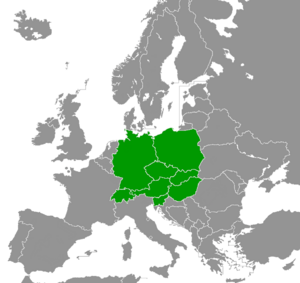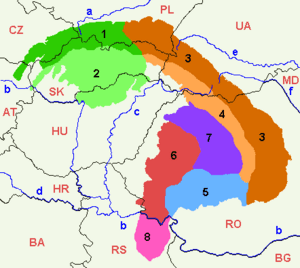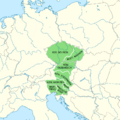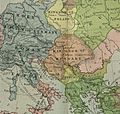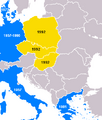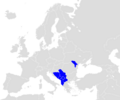Central Europe facts for kids
Central Europe is a special part of Europe. It sits right in the middle of the continent. This area is found around the Alps and Carpathian Mountains. It is located between what we call Eastern and Western parts of Europe.
Exactly what countries are in Central Europe can change. Different people and countries have their own ideas. But usually, these countries are seen as part of Central Europe:
Contents
What is Central Europe?
Central Europe is a unique region. It has a mix of cultures and histories. Its location means it has been a meeting point. Many important events in history happened here. The region is known for its beautiful mountains. It also has many rivers and forests.
Countries in Central Europe
The countries in Central Europe are diverse. Each one has its own special traditions. For example, Germany is known for its big cities and history. Switzerland is famous for its mountains and chocolate. Austria has grand palaces and classical music. Poland and Hungary have rich histories. They also have unique languages. The Czech Republic and Slovakia were once one country. Now they are separate nations. Liechtenstein is a very small country. Slovenia is known for its stunning natural beauty.
Different Ways to Define Central Europe
People sometimes define Central Europe in different ways. For example, during the Cold War, Europe was divided. There was an "Iron Curtain" that split the continent. This was a political border. It separated communist countries from non-communist ones.
When using this old definition, some Central European countries were split. The Czech Republic, Hungary, Poland, Slovakia, and Slovenia were seen as part of Eastern Europe. Meanwhile, Austria, Germany, Liechtenstein, and Switzerland were considered Western Europe.
Some experts think this way of dividing Europe is old-fashioned. But big groups like the UN and EU sometimes still use it.
Also, other countries are sometimes included. Countries like Croatia might be added. The Baltic states of Latvia, Lithuania, and Estonia are sometimes mentioned. However, these are now mostly seen as part of Southern Europe or Northern Europe.
Images for kids
-
The Danube watercourse system throughout Central and Southeastern Europe
-
The entrance of the Central European University in Budapest
-
Frankish Empire and its tributaries (AD 843–888)
-
Bohemia in 1273
-
Kingdom of Hungary in 1190
-
Stages of German eastern settlement, 700–1400 adapted from Walter Kuhn
See also
 In Spanish: Europa Central para niños
In Spanish: Europa Central para niños


